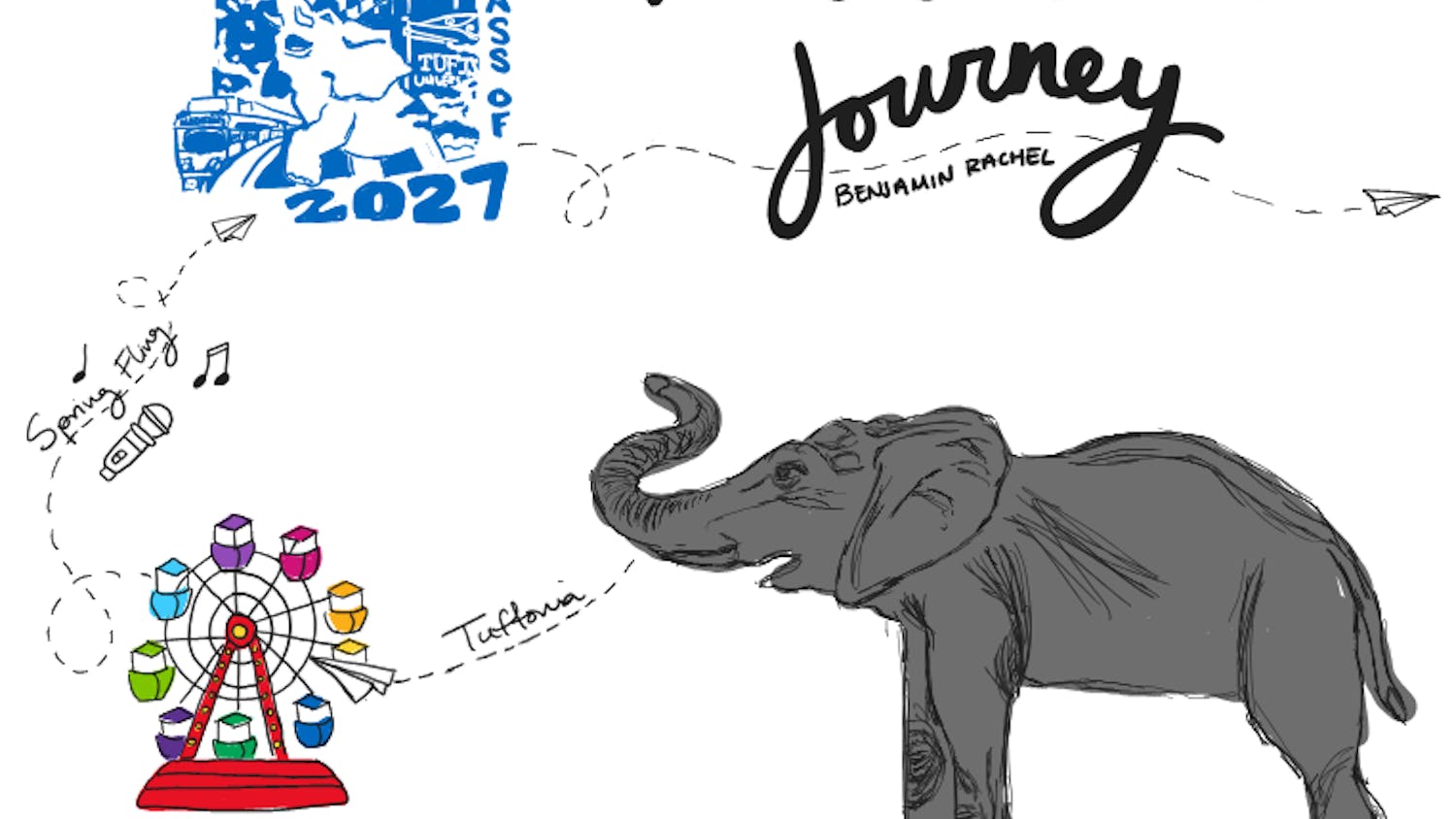A returning Tufts student may arrive on campus with many thoughts, feelings and desires, many of which differ greatly from the year before. But alas, one experience of our fall beginnings will never change: the mass congregations of first-years. The seniors, juniors and even some sophomores have found and accepted their niche in the Jumbo community, but the first-years wander aimlessly from building to building, event to event, in massive hordes, laughing, balking, complaining…
Upperclassmen indubitably witness these spectacles throughout the levels of our campus twice or thrice a day, but the question of why remains. What brings them together in such staggering accumulations? Excitement? Fear? Sexual angst?
Perhaps the answer lies in the behavior of the American flamingo, resident to the saline lagoons of the Caribbean and the Galápagos Islands. These tropical, exuberantly pink waders, much like baby Jumbos, form dense feeding and breeding groups year-round known as colonies. The size of an American flamingo colony may vary depending on the time of year and the locality, but numbers may at times exceed 1,000 breeding pairs in one area.
While one may never be certain as to why they do this, ornithologists believe this social behavior of congregation increases the likelihood of survival for each individual flamingo. This makes sense if we take the perspective of a flamingo hunter like the canine — narrowing 1,000 flamingos into one target poses a more difficult target than simply hunting down one individual.
Does fear drive this congregative behavior in first-years then? Perhaps, but the American flamingo may provide yet another possibility. Reintroduction initiatives for re-establishing American flamingo populations in smaller islands of the Caribbean (Cuba, for example) have been executed with relative ease and success as compared to initiatives for other species. The plans weren’t complicated either — conservationists simply installed mirrors within smaller flamingo colonies and let them do the rest. How does that work?
The answer lies in the exploitation of another behavior exhibited by all species of flamingos worldwide: when flamingos see other flamingos “consummating,” it gets them in the mood to do so as well. The installation of mirrors facilitated this process by deceitfully duplicating the number of apparent breeding pairs in the colonies of interest, thereby enticing the real flamingos to breed and as a result increase the local population.
But if the first-years horde together for protection against predators and to breed wildly, why do their colonies dissipate after the first semester? Do the predators switch to another food source after the first semester, or do the first-years simply have no further desire to breed with each other after their 14-week period as a colony? Baby Jumbos are such socially complex creatures, and extensive further research is required if we hope to understand the psychological cues behind these great gatherings observed every September.
Until next time,
Henry
More from The Tufts Daily
Farming for a future
By
Ellora Onion-De
| April 17
T Time: A trip to Wonderland
By
Jeremy Bramson
| April 17





